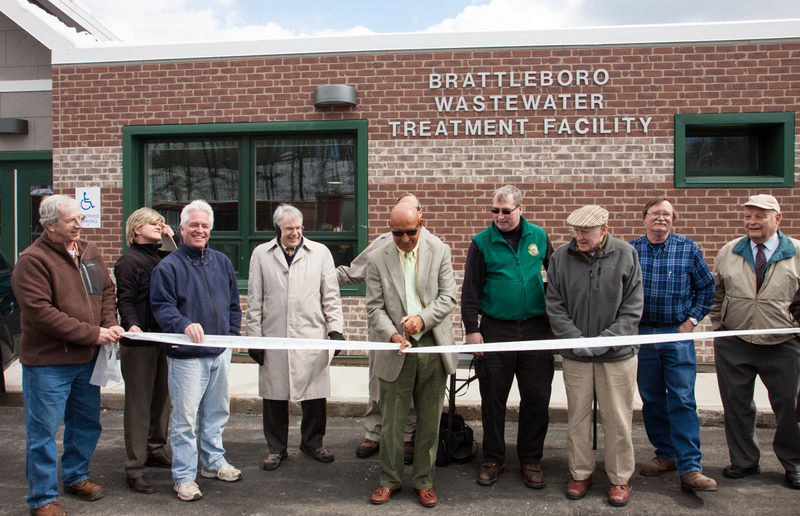Waste Water Treatment Plant
 Brattleboro's wastewater treatment plant is located along the Connecticut River off Route 142. An average daily flow of 1,300,000 gallons of waste is treated per day. Our plant was first constructed in the late 1960’s and upgraded to a secondary plant in 1981-82.
Brattleboro's wastewater treatment plant is located along the Connecticut River off Route 142. An average daily flow of 1,300,000 gallons of waste is treated per day. Our plant was first constructed in the late 1960’s and upgraded to a secondary plant in 1981-82.
The latest upgrade at a price of $22,500,000 is basically competed at the end of 2013 with a few details to wrap up. Major work included construction of a new Headwork’s / pumping building, replacement of the primary clarifiers with two new circular clarifiers, addition of one digester, upgrades to the existing secondary clarifiers, and upgrades to the chlorination building. All existing buildings are upgraded for energy efficiency and too many other changes to list here.
Phase I was the replacement of our Rotating biological contactors, to take advantage of stimulus funding. Engineering and design was by Hoyle, Tanner & Associates, Inc. and PC Construction was the prime contractor.
A third phase has upgraded the pump station for the Putney Road area and still to complete is the elimination of the Black Mountain pump station by boring a line under I-91.
Treatment Process
Brattleboro's plant is a primary-secondary type using Rotating Biological Contactors as the secondary process. A brief outline of the treatment process follows:
Initial settling for the removal of grit and stones and screening for the removal of objects such as clothing, and other trash.
Primary Settling tanks - floating material is skimmed off, and material that sinks to the bottom is pumped to a digester.
The remaining liquid from the settling tanks travels to the Rotating Biological Contactors. These Contactors are approximately 12 foot in diameter by 20-foot long drums with much surface area, which lie horizontally and slowly turn. The lower third of these Contactors are submerged in water, and over time grow a layer of biological slime on their surfaces. Organic matter in the water is used as food for the growth on the RBC's and the water is cleaned. There are 20 of these Contactors in four rows of five. After time in the RBC's, water is sent to the two secondary clarifiers for final settling. Chlorine is added for disinfection and the water spends time in the chlorine contact chamber. The water (effluent) is released to the Connecticut River after a final check that the chlorine is back to near zero.
Material is pumped from the Primary settling tanks to one of three Digesters. Digesters are approximately 38-foot diameter; covered concrete tanks where organic material is decomposed by natural occurring bacteria. Temperature, pH and other factors are controlled to optimize the process. The by-product of decomposition is methane gas, which is burned in a boiler to heat the digesters, or in a generator to produce electricity for use at the plant. The "sludge" as it is called is moved from the Primary digesters to the secondary digester and is finally de-watered. This material is hauled away to be either land applied as fertilizer or deposited in a landfill. Possibly to be composted in the future.

